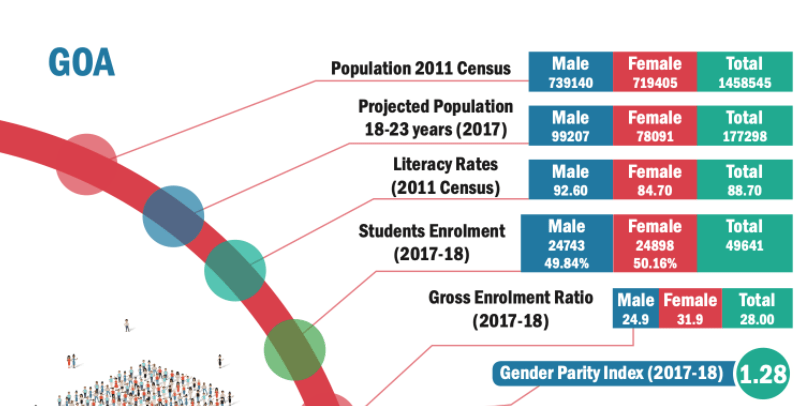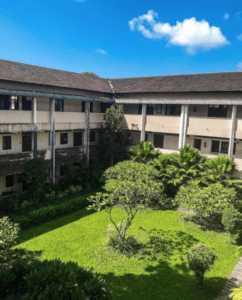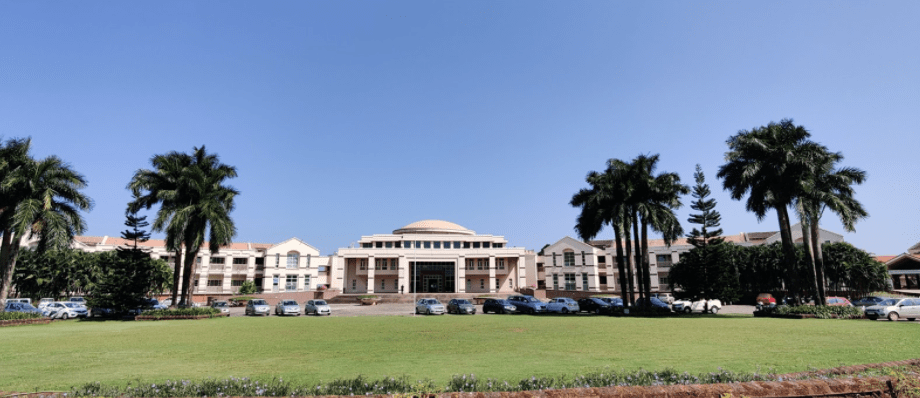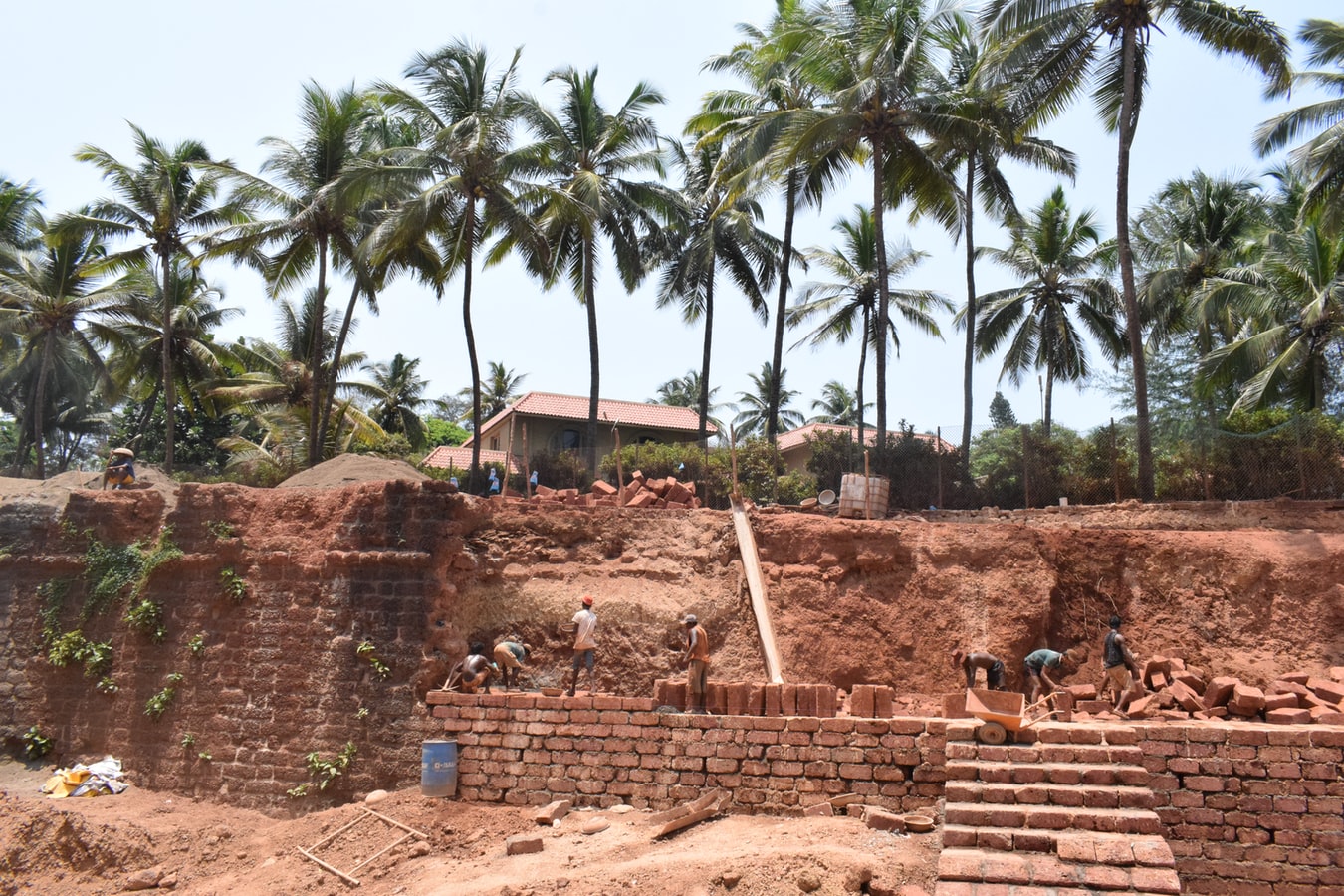Updated on 10 July 2021
In his February 2020 Budget Speech, Goa’s Chief Minister Pramod Sawant spoke of the BJP-led government’s vision to transform Goa into an educational hub that could provide quality higher education to local students and diversify the economic base. Increasing the number of quality institutes for higher education has been an ongoing demand; since 2012, governments have lobbied for publicly-funded national institutions to be set up in the state. This time around, the difference lay in the “how”.
Later in February 2020, the Goa Legislative Assembly passed the Goa Private Universities Bill 2020, which sought to provide for the “establishment and incorporation of private Universities in the state of Goa for imparting quality and industry-relevant higher education (emphasis added).”
The State of Goa welcomes the prestigious private universities in India to set up their campuses here and partner in our initiative to develop Goa as an Educational Hub. @narendramodi @PMOIndia @AmitShah @DrRPNishank @JPNadda @blsanthosh @smritiirani
— Dr. Pramod Sawant (@DrPramodPSawant) August 4, 2020
As per UGC Regulations, private universities are to be instituted by an act of the state legislative assembly, following which it is listed by the UGC. Following the Ambani-Birla Report in 2000, which first recommended the Private Universities Bill, many states have been passing their respective legislations to invite private universities to set up shop, Goa and Sikkim being the most recent.
Like any development project, the proposition of an educational hub invites a critical discussion to understand what the project means for quality and accessibility of education, land rights and the environment, and the realization of a sustainable economy.
Goa’s Higher Education Landscape: The Story Thus Far

Goa boasts of impressive education indicators, credited to its small geographical size, low population density, and high per capita income. The state’s historical trajectory, too, has contributed to shaping the education landscape, with Portuguese Jesuit missionaries bringing in the Western model of education as early as 1575. Escola Medica, established in 1842, incidentally in response to a series of epidemics, was the first teaching institute of allopathic medicine in Asia.

Post-liberation, Dayanand Bandodkar, Goa’s first Chief Minister and bahujan leader, made concerted efforts to make education accessible to all sections, setting up primary schools which taught in local languages across villages. This not only spread literacy but also widened the base of individuals and communities then eligible for higher education. In his book ‘India’s First Democratic Revolution’, Parag Parobo argues that this was in contrast to Nehru’s thrust to higher education (at the cost of sidelining primary education) in post-independent India.
“We have a good number of colleges now, considering the space [available], both in rural and urban areas. Most of these colleges came up in the 1990s. It was a time when politics took a different turn; there was constant instability and all politicians were trying to create a voter base,” says Parobo, who teaches history at Goa University. “Post-liberation, you also had families from the mining sector setting up several private aided colleges.”
Over the subsequent years, however, an increasing number of Goan students have been migrating to other states for higher education in search of better quality education or fields of study that are not available in Goa. Those who stay back frequently raise questions about the quality of the higher education on offer.
Goa University, the lone state university established in 1984, is affiliated with 8 government colleges and 26 non-government aided colleges which offer both aided and self-financing courses. For instance, at the V.M Salgaocar College of Law, the aided 5-year B.A LLB course costs roughly ₹10,000 a year, while self-financing LLM and 3 year LLB courses charge roughly 50,000 and ₹30,000 per year, respectively. This has ensured comparatively affordable fee structures even at privately-owned colleges in the state.
Apart from Goa University, there are several autonomous institutes — the publicly subsidised IIT Goa (2016), NIT Goa (2010), Institute of Hotel Management (2002), National Institute of Oceanography (1967), and the privately funded KK Birla Goa Campus (2004) and Goa Institute of Management (1993). As national-level institutes, all six have a competitive entry process and cater to students across the country; only GIM lowers cut-off scores for Goan students, while NIT Goa provides for domicile seat reservation.
The Goa Private Universities Act 2020 attempts to change the current landscape, actively eliciting private participation for the first time in Goa. As per the Act, setting up of private campuses would be contingent on the creation of a permanent endowment fund (of at least ₹5 crores) by a sponsoring body, as well as ownership of land and infrastructure, among other conditions. The Act maintains that said universities would be self-financed and not entitled to any form of grants or financial assistance from the Government. As per reports, there are currently four proposals awaiting Government approval.
Students Speak: Understanding Implications for Quality and Access
The new Act seeks to bolster higher education in Goa by providing alternative privately funded routes – but how far does that address current challenges of quality, and who will have access to this education?
“Goa does not have a serious coaching culture, which leaves students at a disadvantage when seeking admission in reputed national institutions… The state Board marking scheme is also stricter than CBSE. Quality private education in the metro cities is also not something most of us can afford. So where does that leave us?” asks Armaan*, a student at Kare Law College in Goa. While the opportunity to study away from one’s home carries its own set of benefits in terms of exposure and holistic student development, the choice to migrate is often constrained by factors like income and gender. “My mother was never allowed to leave Goa to study in the 90s, and neither am I, even in 2021 — the fear for our safety outside Goa continues. My male family members have been able to study outside the state,” shares Sakshi*, a student at Goa College of Art. Given her constraints, she believes that the proposed private institutions would give her more options in Goa.
But who can benefit from this increase in options and avail of this proposed route to quality higher education? Joseph*, a Class 12 student hoping to secure admission in the state-funded Goa Engineering College (GEC) this year, shares that while IIT and BITS Goa charge over three lakhs a year, GEC charges a significantly subsidised fee of ₹50,000. “What about those of us who are first-generation learners and don’t have the family savings to pay these fees? We are told to take a loan and treat higher education as an investment. But where are the jobs in Goa to guarantee this?” he asks in Konkani.
The premise of private universities being a source of quality education can be contested too. Sneha*, a Goan student at Symbiosis Pune, raises questions about greater quality being offered by private institutions. “India has hundreds of private institutions, but it is only a few that do well on the NIRF ranking list. My friends from Goa who took admission in private engineering colleges in Manipal or Vellore did so because they could not make it to IITs and NITs. The average Goan student doesn’t even have this option, and is compelled to settle for government-funded or partially-aided courses in Goa which are sub-par in quality,” he says.
Simran*, who moved to Belgaum to pursue Dental Studies, still believes the Act could benefit some. “For those of us who have had to take admission at private colleges outside Goa, assuming the tuition fees to be equivalent, a quality alternative in Goa would be welcome. It would save a lot of overhead costs, and also be a more comfortable space,” she says, adding that “residential campuses can be a jarring cultural shock for young Goan students fresh out of school, adjusting to a new language, food and way of life. Of course, this is an option only for the affluent.”
Diversifying the Economic Base: Education for the Economy?
Diagnosing Goa’s problem, educationist Prabhakar Timble believes that “the expansion in Goan higher education has been in traditional streams of Arts, Science and Commerce. Goa should be proactive in welcoming institutions in fields where skill sets are in demand — such as Ship-Building, Science Education and Research, Design, Public Administration, Mass Media, Nursing etc. This could constitute Goa’s knowledge industry and would generate substantial employment avenues for the youth.”
Arguing in favour of regulated private investment to meet the challenges of expanding the number and quality of higher education institutes in Goa, Timble shares, “National level institutions are being established with a focus on quality and exclusivity. But, this fails to answer the challenge of exploding numbers [of students] to be serviced through higher education. The answers lie in a combination of facilities established through private ownership and partnerships, private-public partnerships and foreign-domestic partnerships in education.”
The thrust towards an educational hub does, however, extend beyond the interests of local Goan students, bearing wider economic implications for the state. As seen in the case of education hubs like Manipal and Vellore, there is a potential to create a viable economic ecosystem.
“When you have a small state which is dependent on sectors like mining, tourism, and increasingly on pharmaceuticals, it is best to have a more diversified base for your economy. Especially with the economic cost of COVID-19, tourism will not be the revenue-earner it was in the past, and so what Goa needs is educational institutions which will attract students from across India,” says the director of International Centre Goa and education columnist Dr Pushkar.
Previously a professor at the BITS campus in Goa, Dr Pushkar describes the impact that the students and faculty at the institution have on the surrounding local economy, creating a large base of captive consumers who are far less erratic and polluting than in the case of tourism. He argues that with good connectivity and living conditions, Goa is an ideal location — which is an underplayed factor — for educational institutions. Many Goan industrialists have also been in favour of roping in the private sector to create an education hub, especially in facilitating employability and the development of skill sets.

Like with tourism and real estate, local anxieties about migration and fears of the cultural landscape being diluted are ongoing negotiations, especially after the pandemic. These fears of hurting local interests reneged on the decision to convert Goa University to a Central University in 2008, which is to date bound by domicile rules while recruiting faculty. Some like Luis Vernal, a member of the Goa University Executive Council, are concerned that the influx of private universities may put Goa University at a disadvantage, as the private institutions would have an edge, not being bound by these hiring practices.
The Politics of Land, Livelihood, and Education
Across the country, the acquisition of land for developmental projects has been a deeply contentious endeavour, and Goa is no exception. In 2020, the village of Shel-Melauli (identified as an Ecologically Sensitive Area of the Western Ghats) saw local tribal communities protest against a proposed IIT project on land that has been traditionally employed for cashew farming. Protesting villagers and activists questioned the proposal to construct an educational institution at the cost of tribal land rights and traditional livelihoods linked to the land and forests.
And so Goa starts another year…on the battleground. #Goa #Melaulim #Goans #IIT #India #Landgrab #policebrutality #antipeople #culture #identity #education #primaryeducation #NEP #school #caste #triballand #uppercaste #accessibility # #girlchild #mothertongue #villages #cartoon pic.twitter.com/VkxKmSsqJN
— Angela Ferrão 🏳️🌈 (@Ferraodesigns) January 6, 2021
A precedent can be found in the Rajiv Gandhi Education City, planned as a hub for higher education and research and made possible through the State Government’s acquisition of nearly 2000 acres of land from agricultural farmers in Haryana in 2006-07. While it facilitated access to better roads and sanitation facilities, provided alternative sources of employment (albeit contractual), it also led to the levy of house taxation and complaints of unfair compensation, which particularly harmed owners of small landholdings.
This raises crucial questions about where the proposed private institutions will be located and how purchase of land will be negotiated with local residents. In 2014, while attempting to identify land for a proposed IIT, IIM, and AIIMS, the Chief Minister at the time expressedthat limited land would be allotted, as Goa did not have much free land. Moreover, it is worth noting that marginalized rural communities from whom land is acquired are also less likely to directly benefit from the proposed educational institutions themselves due to the expensive price tag on private universities. The legislations in Haryana and Andhra Pradesh, for instance, include mandates like domicile reservation, fee concessions, and socio-economic reservation. Goa’s Act in the present form, however, makes no mention of any such provision.
Dr. Pushkar believes these provisions will have to be negotiated between investors and the government over time. “The first step is that the Bill has been passed, and proposals invited. The second step is to look at how expensive the education will be — for instance, if the government provides land or some other assistance, they can perhaps demand a ceiling on tuition or reservation. Of course, it’s hard to say in whose favour these negotiations will be; much will also depend on the kind of universities that apply and the investors’ vision. It could be like the Ashoka University model that charges very high fees, used to subsidise the fees of some other students… Or, it could be like an Azim Premji [model] that has a massive corpus which subsidises fees for all,” Dr Pushkar opines.
Nevertheless, the Goa Private Universities Act provokes important questions for Goa’s administration and the politics of land as a resource. A professor and researcher from Goa, who wished to remain anonymous, believes that the Act is a move to take over land, given that politics in Goa closely revolves around land ownership.
What is interesting is that the Government itself has failed to acquire land for education (a reference to the IIT issue). Now, instead, you have private entities seeking to take over land while cashing in on this cosmopolitan, tourist image of Goa. It is not surprising, however, since politicians have often played the role of mediators or brokers with regard to land. All politicians in Goa are directly related to land, in the sense of real estate, tourism or mining — that’s a consistent feature in Goa’s politics since the 1990s.
The Path Ahead for Goa
Popular representations of Goa often tend to erase local communities, their developmental concerns, and aspirations. Reduced to a tourist destination for most outsiders, Goa faces its own set of internal contradictions and political tussles. These have become more pronounced over the past year through opposition to environmentally hazardous development projects, local anxieties around migration and tourism, and more recently, questions around the efficacy of public health infrastructure. Among the various development concerns that tend to be sidelined when we talk about Goa is higher education, intrinsically linked to local youth aspirations and the Goan economy.
While there has been a larger acceptance of the State’s role in elementary education owing to the RTE Act, public financing and responsibility in higher education is a far more contentious arena. Set in the context of Goa, the question of quality and access, friction between economic restructuring and the environment, and the quest for sustainable economic development add deeper layers of nuance.
The absence of substantial and meaningful public discourse around the 2020 Goa Private Universities Act and its implications for Goa’s higher education landscape is clear. There is a need for critical inspection, consideration of perspectives of various stakeholders in the education system. In the course of writing this piece, 16 students across arts, science, and commerce public colleges in Goa were reached out to for comments. Otherwise politically aware beings, most of them declined to comment as they had not heard of the Act itself. While this is far from a representative sample, a simple Google search will further reveal minimal coverage by the media and negligible conversation on social media.
Beyond students, the IIT-Melaulim protests are an example of the need for more engagement with communities, especially those whose livelihood is linked to the land, and a conscientious envisioning of development. Status-quo reveals a certain acceptance of a dichotomy between education and economic development on the one hand and the environment on the other. For instance, those opposing the setting up of the IIT on tribal lands were accused of obstructing development and hindering educational opportunity.
In the 2020-21 admission cycle, four state-level private engineering colleges in Goa were left with nearly half their seats vacant while the state-run Goa Engineering College filled all its seats, illustrating how income constraints have become far more pronounced with the pandemic. Therefore, regardless of the entry of private institutions, there is a need to bolster state-level public institutions as a credible and affordable alternative; to move away from the hierarchised public education system, which concentrates quality education in Central Universities and a few state Universities in metro cities — antithetical to the very idea of public education.
*names changed to maintain anonymity | Featured image courtesy Hiren Harsora






